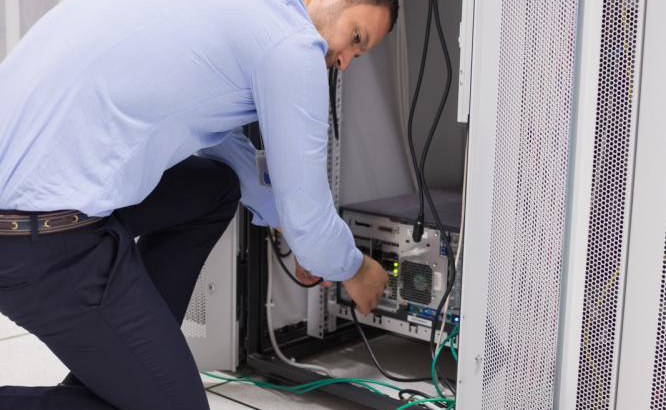Running a scheduled server maintenance is important to ensure that these continuously operated, happy-to-facilitate-your-request type data workhorses, keep galloping in full flow. Because if they stop working, your entire business operations can come to a halt.
Fair enough,
“But what steps constitute a robust server maintenance protocol?”
To help you out, we’ve compiled an inspection checklist entailing a comprehensive server maintenance process. It is divided into two parts.
The first part lists all the necessary physical checks and the second part is concerned with the required system checks when performing server maintenance.
You can walk through it and treat it as a template for creating a checklist of your own. Or, you can even copy it as it is if you believe no further additions are needed.
Server Maintenance Checklist – The Necessary Physical Checks
Your server is a machine. As much as it needs the right set of configurations to perform at optimum efficiency, it also needs the right physical environment to operate in. When executing a server maintenance protocol, here are some physical checks that you should perform:
1) Monitor the Server Room Temperature and Humidity
Temperature and humidity can affect your server’s performance—not to mention its service life. For instance, if you are running your server at a temperature higher than the datasheet specified standard, it can lead to frequent hang-ups and premature component failure.
Likewise, if your server is operating in high humid conditions, the subsequent condensation can lead to corrosion or a short circuit.
2) Make Sure Your Server is Mounted on a Secured Platform
A secured platform is one that is stable and isolated from any source that produces mechanical vibrations. Mounting your server on a secured platform ensures that it does not fall and remains protected against any physical damages.
3) Inspect the Server Inlets and Outlets for Dust Accumulation
During the course of its operation, dust and airborne particles are likely to accumulate on the server’s air inlets and the venting outlets. This can block the flow of air, impeding server’s performance and resulting in premature failure of components because of excess heat generated in the process.
Exercising these physical checks would ensure safe and efficient working of the installed servers.
Server Maintenance Checklist – The Required System Checks
Now, let’s move on to the second phase of your server maintenance protocol where system configurations will be reviewed.
1) Check the Hard Disks
Hard disks help servers to store and retrieve information every time a network request gets submitted. Without them, the servers won’t be able to facilitate network requests. Therefore, it is important to make sure that server-fitted hard disks are working. When going through a server maintenance process, inspect your hard-disk for any issues of fragmentation and bad sectors. Also, ensure that there is enough storage space available to accommodate future operations.
2) Check that the Server Backup is Functioning as Required
Making sure your server backup system is functional is an absolute must when conducting server maintenance. It is the key to having an effective IT disaster recovery plan.
3) Check System Security
Your server’s security helps protect the data in transit and the data at rest. Make sure the operating system and the software supporting your server’s function are patched up and up to date.
This brings us to the end of our checklist. Did you find it helpful? Do you have any more questions about running a scheduled server maintenance?
Reach out and let us know. Our team at Rete Consulting specializes in providing IT consultation services and technology planning assistance to make sure all our customers can run their business IT operations successfully. Contact us for free consultation.
